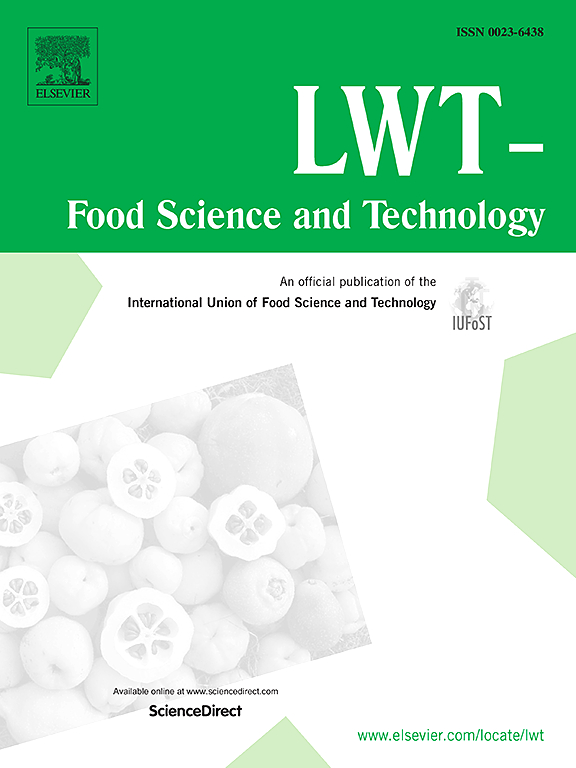Preparation of phosphatidylcholine with high content of EPA and DHA from antarctic krill oil via lipidomics-guided column chromatography
IF 6
1区 农林科学
Q1 FOOD SCIENCE & TECHNOLOGY
引用次数: 0
Abstract
Phosphatidylcholine (PC) forms of EPA and DHA confer remarkable health benefits; however, effective enrichment methods remain underdeveloped. This study employed lipidomics techniques to investigate the elution patterns of PC molecules in column chromatography, aiming to prepare EPA/DHA-enriched PC derived from Antarctic krill oil. The optimal conditions for PC separation were identified as using 200–300 mesh silica gel, a 1:50 sample loading ratio, and a 3:2 dichloromethane-to-methanol solvent ratio, yielding a total recovery rate of 84.13 % and a purity of 97.32 %. Fatty acid analysis revealed that as elution progressed, the concentrations of EPA and DHA in the recovered PC gradually diminished, with the highest concentration observed in the initial PC fraction, reaching up to 76.16 %. Multivariate statistical analysis indicated that the elution order of PC molecules was influenced by their total carbon chain length and degree of unsaturation within the dichloromethane/methanol system. Notably, PC molecules containing two polyunsaturated fatty acid chains, such as PC 22:6/22:6, PC 20:5/22:6, and PC 20:5/20:5, eluted earlier, while those with shorter or less unsaturated fatty acid chains, including PC 16:0/18:1 and PC 16:0/16:1, eluted later. These findings offer valuable insights for the preparation of EPA/DHA-enriched PC, thereby advancing the development of marine PC-derived functional foods.

求助全文
约1分钟内获得全文
求助全文
来源期刊

LWT - Food Science and Technology
工程技术-食品科技
CiteScore
11.80
自引率
6.70%
发文量
1724
审稿时长
65 days
期刊介绍:
LWT - Food Science and Technology is an international journal that publishes innovative papers in the fields of food chemistry, biochemistry, microbiology, technology and nutrition. The work described should be innovative either in the approach or in the methods used. The significance of the results either for the science community or for the food industry must also be specified. Contributions written in English are welcomed in the form of review articles, short reviews, research papers, and research notes. Papers featuring animal trials and cell cultures are outside the scope of the journal and will not be considered for publication.
 求助内容:
求助内容: 应助结果提醒方式:
应助结果提醒方式:


